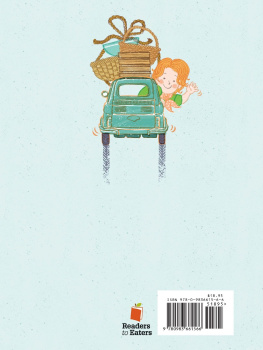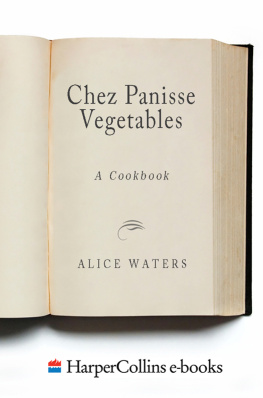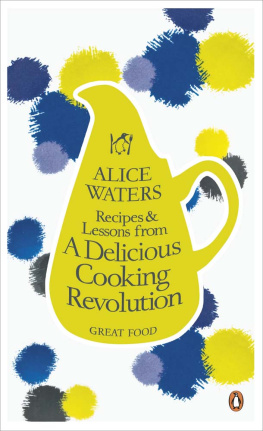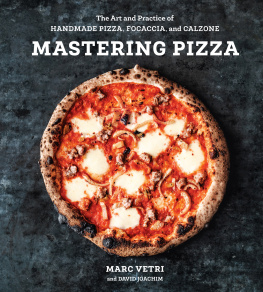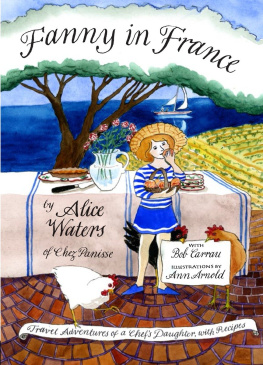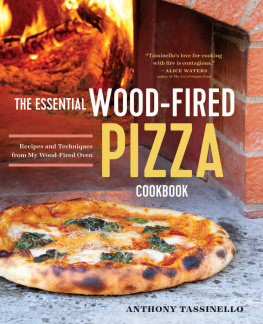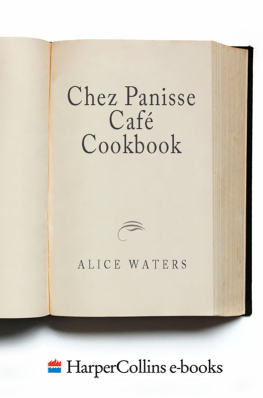Alice Waters - Chez Panisse Pasta, Pizza, Calzone
Here you can read online Alice Waters - Chez Panisse Pasta, Pizza, Calzone full text of the book (entire story) in english for free. Download pdf and epub, get meaning, cover and reviews about this ebook. year: 1995, publisher: Random House, genre: Home and family. Description of the work, (preface) as well as reviews are available. Best literature library LitArk.com created for fans of good reading and offers a wide selection of genres:
Romance novel
Science fiction
Adventure
Detective
Science
History
Home and family
Prose
Art
Politics
Computer
Non-fiction
Religion
Business
Children
Humor
Choose a favorite category and find really read worthwhile books. Enjoy immersion in the world of imagination, feel the emotions of the characters or learn something new for yourself, make an fascinating discovery.

- Book:Chez Panisse Pasta, Pizza, Calzone
- Author:
- Publisher:Random House
- Genre:
- Year:1995
- Rating:3 / 5
- Favourites:Add to favourites
- Your mark:
- 60
- 1
- 2
- 3
- 4
- 5
Chez Panisse Pasta, Pizza, Calzone: summary, description and annotation
We offer to read an annotation, description, summary or preface (depends on what the author of the book "Chez Panisse Pasta, Pizza, Calzone" wrote himself). If you haven't found the necessary information about the book — write in the comments, we will try to find it.
Chez Panisse Pasta, Pizza, Calzone — read online for free the complete book (whole text) full work
Below is the text of the book, divided by pages. System saving the place of the last page read, allows you to conveniently read the book "Chez Panisse Pasta, Pizza, Calzone" online for free, without having to search again every time where you left off. Put a bookmark, and you can go to the page where you finished reading at any time.
Font size:
Interval:
Bookmark:

The Chez Panisse Cookbook Library
Chez Panisse Cooking
Chez Panisse Desserts
Chez Panisse Menu Cookbook
Chez Panisse Pasta, Pizza, & Calzone
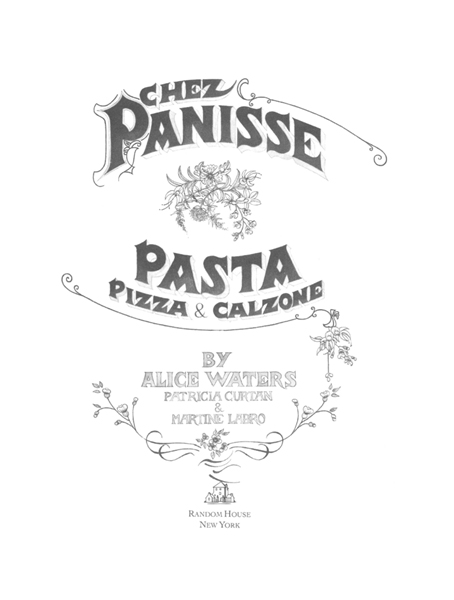
Illustrations by Martine Labro
Copyright 1984 by Tango Rose, Inc.
All rights reserved under International and Pan-American Copyright Conventions. Published in the United States by Random House, an imprint of The Random House Publishing Group, a division of Random House, Inc., New York, and simultaneously in Canada by Random House of Canada Limited, Toronto.
This work was originally published in hardcover by Random House, Inc., in 1984.
R ANDOM H OUSE and colophon are registered trademarks of Random House, Inc.
Library of Congress Cataloging-in-Publication Data
Waters, Alice.
Chez Panisse pasta, pizza, & calzone.
1. Cookery (Macaroni). 2. Pizza. 3. Calzone. 4. Chez Panisse.
I. Curtan, Patricia. II. Labro, Martine. III. Title. IV. Title: Chez Panisse
pasta, pizza, and calzone.
TX809.M17W35 1984 641.8 83-43186
eISBN: 978-0-307-78668-5
v3.1
This book is dedicated to our children
Fanny, Zachary, and Camille.
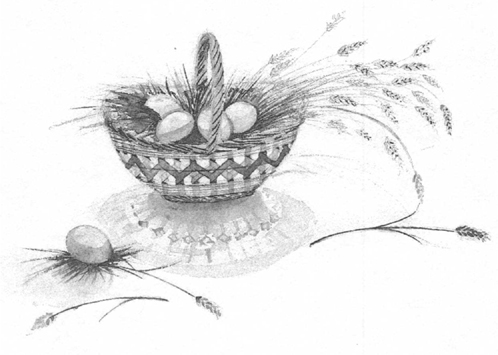
We wish to thank our tasters and family, Stephen Thomas, Stephen Singer, John Hudspeth, and Claude and Camille Labro. We are very grateful for the technical advice and expertise of Fritz Streiff, Will Powers, Elaine Ginger, Janet Kessel, and David Goines. Special thanks and appreciation to those suppliers and producers of wonderful foodstuffs: Paul Johnson and the Monterey Fish staff, Kathleen and Robert Stewart, the Chino Ranch, Karen Lake, the Cheeseboard, Green Gulch Zen Center Farm, and the Acme Bread Company. We especially want to thank Jason Epstein, our editor at Random House, for his great good faith and confidence, which allowed us the freedom of spirit to create and design this book exactly the way we wanted.
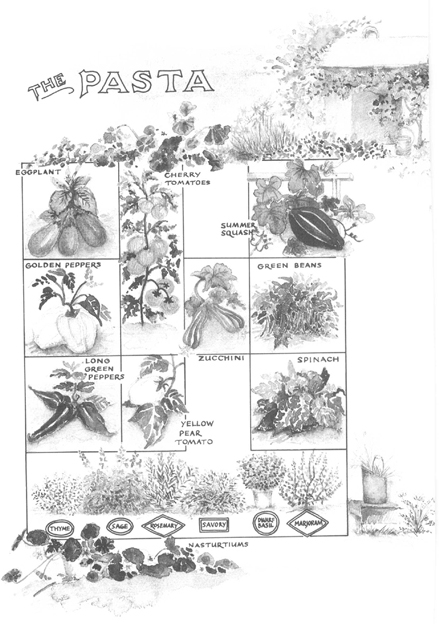

Why pasta and pizza? To begin with, Chez Panisse has always had strong Mediterranean affinities. We share the same climate and many of the same raw materials. The down-to-earth, lighthearted cuisines of Provence and Italy are a constant source of inspiration grilled radicchio and anchovies, roasted peppers and garlic, brandade, crusty pizzas baked in wood-burning ovens, mussels and fennel, saffron and tomato fish stews. This is informal food with lively direct flavors. But this cookbook is not a regional, historical, or encylopedic treatment of the subject. Its meant as an introduction to our style of pasta and pizza: more Provenal than Italian in inspiration, highly personal in execution.
The pasta recipes appear in a seasonal format to show how naturally cooking can reflect the time of year and the kinds of ingredients you might find in a modest kitchen garden. Where pasta is concerned, we generally prefer fresh homemade pasta thin, delicate, and soft. Pasta is extremely satisfying to make not only because its cheap and easy, but because very delicate fresh pasta simply cant be bought. Our recipes reflect our prejudice for hand processing. Handmade pasta is great to eat and to look at when it has pleasant irregularities: slightly uneven hand-cut noodles look beautiful and taste better, too, because they cook slightly unevenly, resulting in agreeable differences in texture. You can use little metal dies and get absolutely identical, uniform ravioli, but we prefer the looks of larger hand-cut ravioli, with no two exactly alike.
There are also recipes here for dried pasta in a number of different machine-made shapes; our goal has been to match certain sauces and ingredients with the right type and shape of pasta, and for certain dishes some salads, for example dried pasta works best.
Pizza has the same immediate appeal as pasta, and it satisfies in the same way. The same principles apply to making it: use a light hand (avoid too much cheese!) and avoid overcomplicated combinations of ingredients. Many of the same combinations of flavors work with both pasta and pizza. Above all, feel free to experiment with many different combinations and variations. Like pasta dough, pizza dough can be flavored in different ways. Try incorporating herbs into the dough or anchovies or dried tomatoes.
Most of the recipes in this book were directly inspired by the harvest of a small kitchen garden. The picture of our pasta garden will give you some idea of the possibilities. If you plant a garden it can change your entire style of cooking. Even a tiny plot with just a few herbs, some salad greens, garlic, leeks, and beans can have a dramatic effect. So much commercial produce is grown for its looks and keeping properties, not for flavor, and there is so much standardization of mass-produced food that we are in danger of forgetting how much variety there can be. Refrigeration, freezing, and packaging technology make it possible for us to eat nothing but the same bland, processed flavors year round. But a small-scale garden can open up a new world of grateful subservience to the seasons. Gardening can become your primary source of culinary inspiration: to be able to go to your back yard, pick something, and make a wonderful, simple, impromptu dish of pasta with it is immensely gratifying. Of course, not everyone can have a garden; but you can befriend people who do, and even some commercial truck farmers and market gardeners attempt to meet the demand for produce grown for quality, not yield.
Our hope is to inspire you rather than direct you. You really need only some conception of the possibilities and a little curiosity. Be receptive to variety and improvisation. Weve given you some practical pasta and pizza survival techniques along the way, but our main intent is to share our enthusiasm and whimsy.
All-purpose white flour in this country is generally a blend of hard and soft varieties of wheat. Hard and soft refers to the relative gluten content of the wheat, the substance that allows the dough to form a strong and elastic structure. Almost all brands are enriched with vitamins and minerals to approximate those contained in the wheat germ, which is not present in white flour. Those labeled bleached have been chemically bleached to a uniform whiteness which the manufacturers believe makes a more salable product. This unnecessary process removes some of the flavor and character from the flour.
Whole-wheat flour is milled from the entire wheat berry which includes the wheat germ (with its vitamins, minerals, proteins, and oils) and bran, the fibrous layer surrounding the germ and wheat berry.
Semolina flour is made from very hard or high-gluten wheat, usually durum wheat, which is a hard yellow variety. Generally not ground as fine as our white flours, it has a slightly granular texture. Because of its high gluten content, it makes a strong, fast-drying pasta most suitable for commercial production.
Font size:
Interval:
Bookmark:
Similar books «Chez Panisse Pasta, Pizza, Calzone»
Look at similar books to Chez Panisse Pasta, Pizza, Calzone. We have selected literature similar in name and meaning in the hope of providing readers with more options to find new, interesting, not yet read works.
Discussion, reviews of the book Chez Panisse Pasta, Pizza, Calzone and just readers' own opinions. Leave your comments, write what you think about the work, its meaning or the main characters. Specify what exactly you liked and what you didn't like, and why you think so.



